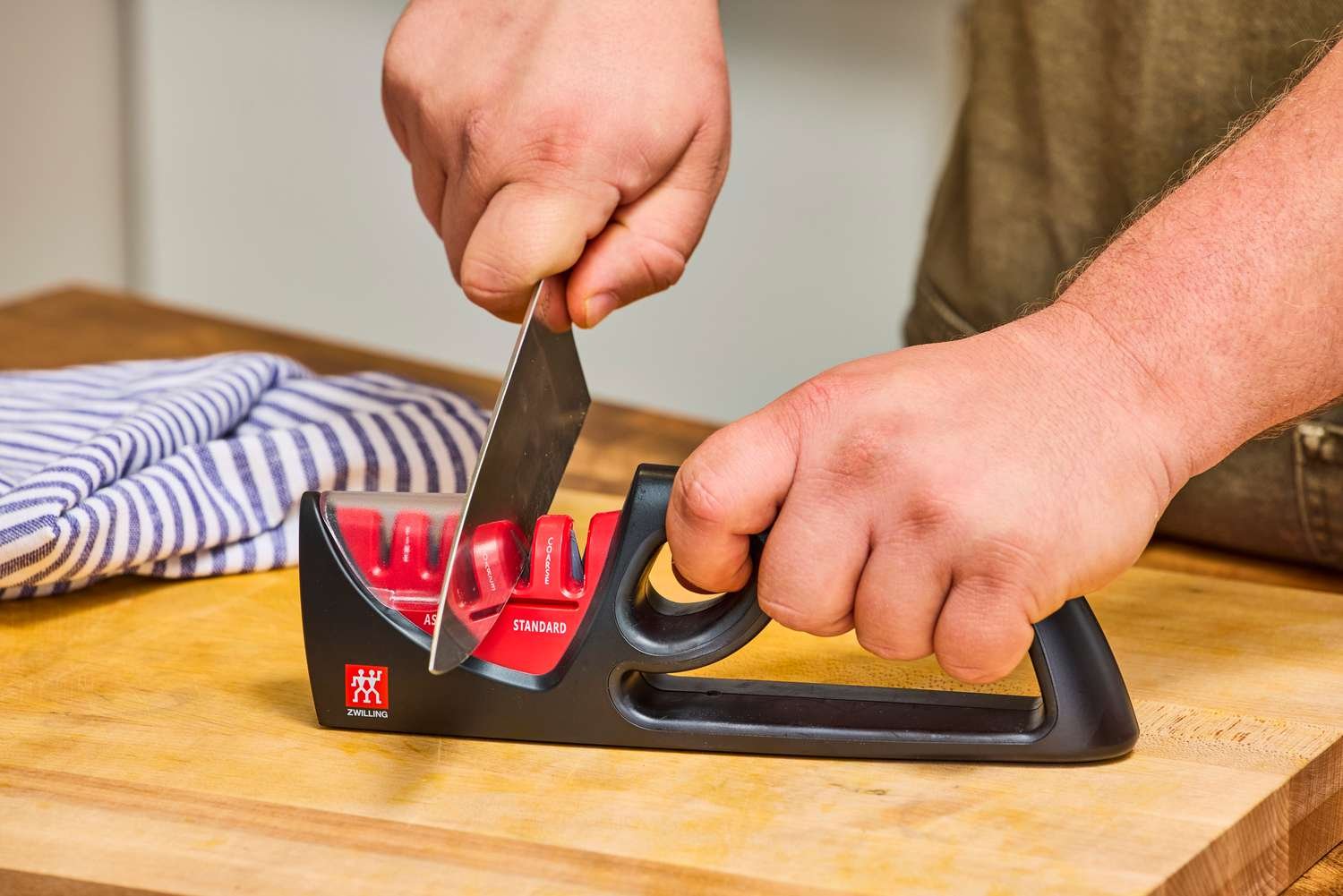Maintaining professional sharpening service keen on your knifes will ensure they will outlast their lifetime and work best. Keeping your knives sharp through regular care or by using Professional knife sharpeners can make all the difference. To frequent cooks—both home cooks and professional cooks—their frustration with the slow blade is by this point far too familiar. The dulled blade will drag, slip, and make simpler cuts chore-like. Correct sharpening reestablishes the desired geometry of the blade, so the blade will work. This supposedly trivial task does much to enhance the safety as well as the efficiency of the cook.
Which Type I Should Choose?
- For fine cutting and knives of uncommon angles (e.g. Japanese knives), use diamond plates or stones.
- For general kitchen knives and convenience, a pull-through or electric sharpener is appropriate.
- Use a rod (honing steel) for general upkeep between full sharpening periods.
Key Features to Inspect
When considering a professional knife sharpener, check for:
- Angle guides / adjustment — ensures proper sharpening angle
- Material quality — durable abrasives, stable body
- Grit range — coarse, medium, fine grits
- Ease of cleaning / maintenance — removable plates, easy to flush
- Safety features — guards, non-slip base
- Replacement parts availability
Step by Step: How to Use a Knife Sharpener
Here is some points. Always refers to manual manufacturer for your model.
- Sharpens knife by the sharpener
- Dry and clean the knife
- Secure the sharpener (if base or clamp)
- Select the starting grit
- Make the right angle
- Many kitchen knives may be sharpened 15° to 20° as per side
- Use angle guides or a visual method to keep consistent
- Sharpen / hone methodically
- For stones: use water or oil (if required)
- Move blade across stone in smooth strokes
- For pull-through: gently pull blade through, not pushing hard
- For electric: insert slowly, let the machine do the work
- Move from coarse to fine grit
- Begin with coarse plates to reset edge
- Progress to finer grit to polish
- Always keep strokes consistent on both sides
- Test sharpness
- Use paper cut test, tomato slice, or feel carefully
- Stop sharpening once you reach the desired edge
- Clean and finish
- Rinse or blow off grit residue
- Dry thoroughly
- Apply oil for safety
Tipsor Practices
- Always maintain a steady, consistent motion
- Use light pressure — let the abrasive do the work
- Do not overdo sharpening — extra sharpening removes material
- Use a rod or steel between sharpenings to maintain edge
- Keep your sharpening tools flat — flatten stones or plates as needed
Mistakes you should Avoid
- Using too much force
- Skipping grit stages
- Sharpening at wrong angle
- Not cleaning residue (which can scratch blades)
Maintenance of Your Sharpening Tools
- Remove metal particles or slurry
- Flatten stones periodically (e.g. with lapping plate)
- Store dry
- Replace worn parts when necessary
Good care ensures consistent performance.
When you need Professional
Even you have best tools, some times blades need professional treatment, such as:
- Severely damaged edges
- Complex shapes (serrated, curved blades)
- Very hard or exotic steels
The Smart Way to Care for Your Knives
Quality sharpening technicians are going to give you sharp blades that are long-lasting, secure, and efficient. The process, the type, and the quality you give with tools are going to make all the difference. Sharpening will be worth the money if you’re a professional chef, workshop wizard, or you’re just an amateur homeowner who is searching for quality, good cutting tools.
The knives will be adequately sharpened, the service life lengthened, and any injury prevented by the above suggestions alongside the proper procedures.
Wrapping Up
In short, smart utilization of professional sharpening knife yields any number of advantages: sharp incisions, easy to maneuver, and lasting knives. You must select the proper type, adhere to systematic process, make tools serviceable, and away from harm. Have a professional sharpen the blade if it is extremely crooked or ripped up. If you manage your blades carefully and thoughtfully, they will endure for many years.





